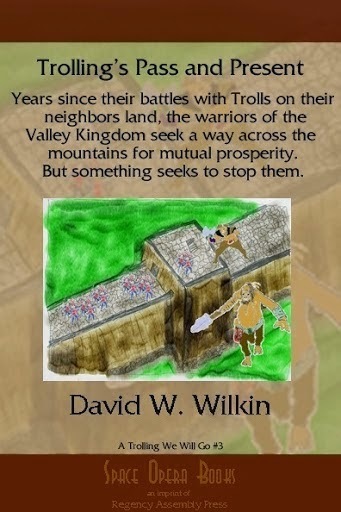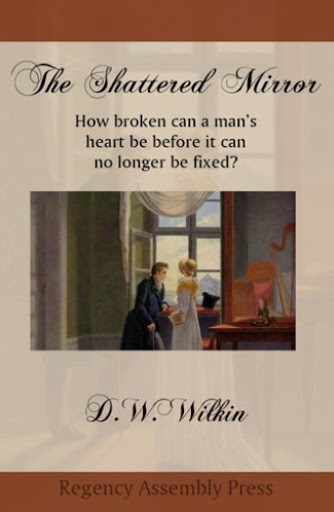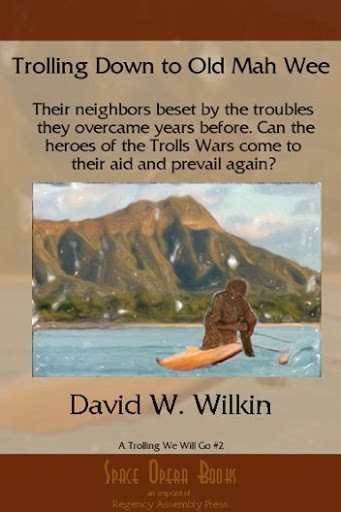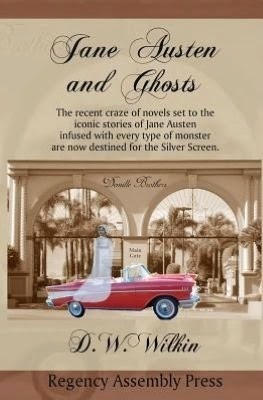D.W. Wilkin's Blog, page 166
December 8, 2014
An Unofficial Guide to how to win the Scenarios of Wild the 2nd Expansion for Rollercoaster Tycoon 3
An Unofficial Guide to how to win the Scenarios of Wild
I have been a fan of this series of computer games since early in its release of the very first game. That game was done by one programmer, Chris Sawyer, and it was the first I recall of an internet hit. Websites were put up in dedication to this game where people showed off their creations, based on real amusement parks. These sites were funded by individuals, an expense that was not necessarily as cheap then as it is now. Nor as easy to program then as it might be to build a web page now.
Prima Books released game guides for each iteration of the game, Rollercoaster Tycoon 1, Rollercoaster Tycoon 2 and Rollercoaster Tycoon 3 (RCT3) but not for the expansion sets. And unlike the first two works, the third guide was riddle with incorrect solutions. As I played the game that frustrated me. And I took to the forums that Atari, the game publisher hosted to see if I could find a way to solve those scenarios that the Prima Guide had written up in error. Not finding any good advice, I created my own for the scenarios that the “Official” Guide had gotten wrong.
Solutions that if you followed my advice you would win the scenario and move on. But if you followed the “Official” version you would fail and not be able to complete the game. My style and format being different than the folks at Prima, I continued for all the Scenarios that they had gotten right as well, though my solutions cut to the chase and got you to the winner’s circle more quickly, more directly.
My contributions to the “Official” Forum, got me a place as a playtester for both expansions to the game, Soaked and Wild. And for each of these games, I wrote the guides during the play testing phase so all the play testers could solve the scenarios, and then once again after the official release to make changes in the formula in case our aiding to perfect the game had changed matters. For this, Atari and Frontier (the actual programmers of the game) placed me within the game itself.
And for the longest time, these have been free at the “Official” Forums, as well as my own website dedicated to the game. But a short time ago, I noticed that Atari, after one of its bankruptcies had deleted their forums. So now I am releasing the Guide for one and all. I have added new material and it is near 100 pages, just for the first of the three games. It is available for the Kindle at present for $2.99.
(Click on the picture to purchase)
Not only are all 12 Scenarios covered, but there are sections covering every Cheat Code, Custom Scenery, the famous Small Park Competition, the Advanced Fireworks Editor, the Flying Camera Route Editor which are all the techniques every amusement park designer needs to make a fantastic park in Rollercoaster Tycoon 3.

December 7, 2014
Regency Personalities Series-General Sir David Dundas
Regency Personalities Series
In my attempts to provide us with the details of the Regency, today I continue with one of the many period notables.
General Sir David Dundas
1735 – 18 February 1820
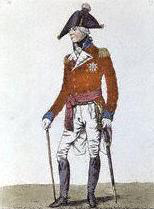
David Dundas
David Dundas was born the son of Robert Dundas, a Scottish merchant, and Margaret Dundas (née Watson), Dundas graduated from the Royal Military Academy, Woolwich as a lieutenant-fireworker in the Royal Artillery on 1 March 1755. He exchanged to the 56th Foot as a lieutenant on 24 January 1756, serving with this regiment during the Seven Years’ War taking part in combined operations against the French ports of St. Malo and Cherbourg and fighting at the Battle of Saint Cast in September 1758. Promoted to captain on 21 March 1759, he transferred to the 15th Dragoons and fought at the Battle of Warburg in July 1760, the Battle of Kloster Kampen in October 1760 and the Battle of Villinghausen in July 1761. Dundas was also present at the fall of Havana in August 1762. He was promoted to major on 28 May 1770 and lieutenant colonel on 12 December 1775. On 31 December 1777 he was appointed Quartermaster-General in Ireland, in which post he was promoted to brevet colonel on 12 February 1782.
On 31 August 1783 Dundas left regimental service and became an advocate of officer training in the British Army writing many manuals on the subject, the first being Principles of Military Movements published in 1788. He chose to play down the light infantry tactics that generals such as Lord Cornwallis or Willam Howe favoured during the American War of Independence. Instead Dundas, after witnessing Prussian army manouvres in Silesia in 1784, favoured the army model that Frederick the Great had created. Its use of drilled battalions of line infantry marching in formation was a stark contrast to the light brigades that fought in small independent groups and with cover during the American War of Independence.
On 23 June 1789 he became Adjutant-General in Ireland where he was able deploy his ideas for military training. He was promoted to major-general on 1 May 1790 and, as Britain became involved in the French Revolutionary Wars, he was appointed second in command at the siege of Toulon under O’Hara and Lord Mulgrave from September 1793, where he commanded an abortive attack on the Arenes Heights on 30 November 1793. Dundas became commanding officer under Lord Hood after O’Hara’s capture in this action. He lost Fort Mulgrave and Mount Faron after a 3-day bombardment on 17 December 1793. Dundas commanded the initial expedition to Corsica in 1794, landing 7 February 1794 and capturing the Mortella Tower. Next, he captured the Port of San Fiorenzo and Bastia, an important first step ultimately leading to the capture of the island and establishment of a short-lived Anglo-Corsican Kingdom by forces under Hood and Admiral Lord Nelson.
Hood forced Dundas to resign on 10 March 1794; Dundas transferred to serve in the Flanders Campaign under the Duke of York. Appointed commander of the 2nd Cavalry brigade after the death of John Mansel at Beaumont on 26 April 1794, he distinguished himself at Willems on 10 May, and was attached to Otto’s column at Tourcoing later that month. Dundas replaced Sir Robert Laurie at the head of his brigade during the retreat to Antwerp. In December, while commanding the British Right under Harcourt, he led the attack at Tuil on 30 December and directed the rearguard action at Geldermalsen on 5 January 1795. He was made commander of the British forces (mainly cavalry) left behind at Bremen in April 1795 and given the local rank of brevet lieutenant general while remaining in Europe on 2 May 1795.
On 26 December 1795 Dundas became Colonel of the 7th Light Dragoons and on 8 November 1796 he became Quartermaster-General to the Forces in which role he implemented the army’s official drill book for Cavalry officers. He was promoted to the substantive rank of lieutenant-general on 4 February 1797.
Dundas commanded the 3rd Division under the Duke of York in the Helder Campaign 1799, seeing action at Den Helder on 27 August, Zype on 10 September, Bergen on 19 September, Alkmaar on 2 October and Castricum on 6 October. On 15 February 1800 he was given the honorary appointment of Governor of Landguard Fort.
He was made Colonel of 2nd Dragoons on 9 May 1801, promoted to general on 24 April 1802 and made commander in Kent and Sussex from 1803. Dundas was appointed Knight of the Order of the Bath on 28 April 1803 and went into semi-retirement in 1805. He chaired the hearing against Le Marchant in charges of calumny from 23 January 1807, was a member of the Court Martial that tried Whitelocke for the failure of the Buenos Aires expedition on 28 January 1808 and was a member of the Board of Enquiry of the Convention of Cintra in 1808. He was appointed Colonel-in-Chief of the 95th Foot on 31 August 1809.
Dundas was Commander-in-Chief of the Forces from 1809 to 1811, during the Duke of York’s period of disgrace following a scandal caused by the activities of his latest mistress, Mary Anne Clarke. Dundas was also a Privy councillor from 22 March 1809 and Colonel of the 1st Dragoon Guards from 27 January 1813.
Dundas was Governor of the Royal Hospital Chelsea from 3 April 1804 until his death. Advanced to Knight Grand Cross of the Order of the Bath on 4 January 1815, he died at the Royal Hospital Chelsea on 18 February 1820 and is buried in the grounds.
In the army Dundas was nicknamed “Old Pivot” for his Prussian-style drill books. Burne describes him as “A level-headed officer”, but “cautious”, while Bunbury writes “He…was an aged man…a brave, careful, and well-skilled soldier…Dundas was a tall, spare man, crabbed and austere, dry in his looks and demeanour…there were peculiarities in his habits and style which excited some ridicule amongst young officers. But though it appeared a little out of fashion, there was ‘much care and valour in that Scotchman'”. Thoumine writes that “Dundas was perhaps not as graceful nor as polished as some of his contemporaries, but he was as sound as oak and utterly reliable”.
In 1807 he married Charlotte De Lancey, daughter of General Oliver De Lancey; they had no children.

Fantasy from Space Opera Books, Trolling’s Pass and Present
Trolling’s Pass and Present
Not only do I write Regency and Romance, but I also have delved into Fantasy. The Trolling series, (the first three are in print) is the story of a man, Humphrey.
We meet him as he has left youth and become a man with a man’s responsibilities. We follow him in a series of stories that encompass the stages of life.
We see him when he starts his family, when he has older sons and the father son dynamic is tested. We see him when his children begin to marry and have children, and at the end of his life when those he has loved, and those who were his friends proceed him over the threshold into death.
All this while he serves a kingdom troubled by monsters. Troubles that he and his friends will learn to deal with and rectify.
It is now available in a variety of formats. For $2.99 you can get this fantasy adventure.
Barnes and Noble for your Nook
Years since their battles with the Trolls, even on foreign soil, the warriors of the Valley Kingdom of Torahn need something to keep their edge honed.
The economy too is beginning to fray a little without the great wars to support. The Leaders hit upon the idea of searching for a path to reach the east side of the continent.
The Elves swear that at one time their writings tell of such, the Dwarves swear such a pass across Teantellen is legendary. Teantellen though is filled with races man has never gotten along with well. Goblins, Dark Elves, Trolls, Giants and Dragons.
It has been years since the mountain tops exploded, and perhaps that has changed things enough that a way can be found to link the western lands with the eastern lands and increase trade, and prosperity for all. Even should they fail in their quest, as the history of man has shown to this point in time, the attempt will do much to spur the economy.
Tens of thousands of gold will be spent by the Council of Twenty-One to pay for such an expedition. Gold that those who are not so scrupulous might choose to pocket as they tried in the Troll Wars.
With such shenanigans taking place again, are the hopes of the previous generation, the leaders from the Troll Wars now in retirement, ready to be achieved? Is it time for Torahn, called the Valley Kingdom, but the only Kingdom without a King, to have a King once more?
Feedback
If you have any commentary, thoughts, ideas about the book (especially if you buy it, read it and like it ;-) then we would love to hear from you.

December 6, 2014
Regency Personalities Series-Sarah Villiers Countess of Jersey
Regency Personalities Series
In my attempts to provide us with the details of the Regency, today I continue with one of the many period notables.
Sarah Villiers Countess of Jersey, Patroness of Almacks
4 March 1785 – 26 January 1867
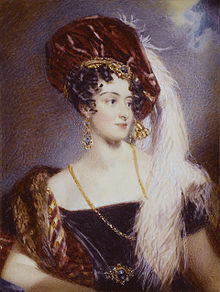
Sarah Sophia Child Villiers
Sarah Villiers Countess of Jersey was an English noblewoman, the eldest daughter of John Fane, 10th Earl of Westmorland, and Sarah Anne Child. Her mother was the only child of Robert Child, the principal shareholder in the banking firm Child & Co. Under the terms of his will, the Countess of Jersey was the primary legatee, and she not only inherited Osterley Park but became senior partner of the bank. Her husband, George Villiers, added the surname Child by royal licence.
Lady Jersey married George Child Villiers, 5th Earl of Jersey, on 23 May 1804, in the drawing room of her house in Berkeley Square. Her husband’s mother, Frances Villiers, Countess of Jersey (also Lady Jersey), was one of the more notorious mistresses of King George IV when he was Prince of Wales. Her sister Maria married John Ponsonby, Viscount Duncannon, later the 4th Earl of Bessborough, a brother of Lady Caroline Lamb. Her own affairs, though conducted discreetly, were said to be numerous: Henry John Temple, 3rd Viscount Palmerston, was thought to be one of her lovers. When asked why he had never fought a duel to preserve his wife’s reputation, Lord Jersey dryly replied that this would require him to fight every man in London.
Lady Jersey was one of the patronesses of Almack’s and a leader of the ton during the Regency era. She was immortalized as Zenobia in Disraeli’s novel Endymion. Caroline Lamb ridiculed her in Glenarvon: in revenge Lady Jersey had her barred from Almack’s, the ultimate social disgrace. This, however, was unusual since she was notable for acts of kindness and generosity; and she was eventually persuaded to remove the ban.
In politics she was a Tory, although she lacked the passion for politics shown by her cousin Harriet Arbuthnot. On hearing that the Duke of Wellington had fallen from power in 1830, she burst into tears in public. She reportedly “moved heaven and earth” against the Reform Act 1832.
Lady Jersey was known by the nickname Silence; the nickname was ironic since, famously, she almost never stopped talking.
She is a recurring character in the Regency novels of Georgette Heyer, where she is presented as eccentric and unpredictable, but highly intelligent and observant, and capable of kindness and generosity.
She died at No. 38, Berkeley Square, Middlesex now London.
Lady Jersey had seven children by George Child Villiers:
George Child Villiers, 6th Earl of Jersey (1808–59)
The Honourable Augustus John Villiers (1810–47), married Georgiana Elphinstone, daughter of George Elphinstone, 1st Viscount Keith.
The Honourable Frederick William Child Villiers (1815–71), married Elizabeth Maria van Reede, daughter of the 7th or 8th Earl of Athlone.
The Honourable Francis John Robert Child Villiers (1819–62).
Lady Sarah Frederica Caroline Child Villiers (1822–1853), married Nicholas Paul (Miklós Pál), 9th Prince Esterházy (1817–94).
Lady Clementina Augusta Wellington Child Villiers (1824–58).
Lady Adela Corisande Maria Child Villiers (1828–60), married Lt.-Col. Charles Parke Ibbetson, and had one daughter Adele.
She outlived not only her husband, but six of her seven children.

RAP has The Shattered Mirror, A Regency Romance
The Shattered Mirror
For your enjoyment, one of the Regency Romances I published. It is available for sale and now at a reduced price, and I hope that you will take the opportunity to order your copy.
Order for yourself or as a gift. It is now available in a variety of formats. For just a few dollars this Regency Romance can be yours for your eReaders or physically in Trade Paperback.
Barnes and Noble for your Nook
and in Trade Paperback
Bridget Halifax-Stokes was giddy with the excitement of her season in London. Town had beckoned and her season came on the heels of the end of the war against the tyrant.
All the handsome men were returning heroes. What better year to come out.
Her father thought it all nonsense. Her mother believed that it would be the best showing of any of her daughters.
More lords available and luck that Bridget was just the perfect age.
All is fun and frivolity until Bridget literally crashes into Sir Patrick Hampton as he limps along the high street. A man she knew once well, now a stranger with dark and foreboding eyes.
Feedback
If you have any commentary, thoughts, ideas about the book (especially if you buy it, read it and like it ;-) then we would love to hear from you.

December 5, 2014
Regency Personalities Series-George Spencer-Churchill 6th Duke of Marlborough
Regency Personalities Series
In my attempts to provide us with the details of the Regency, today I continue with one of the many period notables.
George Spencer-Churchill 6th Duke of Marlborough
27 December 1793 – 1 July 1857
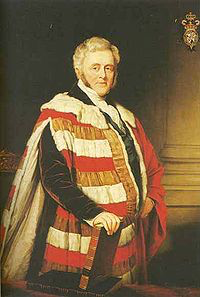
George Spencer-Churchill
George Spencer-Churchill 6th Duke of Marlborough was styled Earl of Sunderland from birth, Marlborough was born at Bill Hill, Wokingham, Berkshire (an estate his father was renting at the time), the eldest son of George Spencer-Churchill, 5th Duke of Marlborough and Lady Susan Stewart, daughter of John Stewart, 7th Earl of Galloway. He was educated at Eton between 1805 and 1811 and later at Christ Church, Oxford. He was also given an honorary Doctorate of Civil Laws by Oxford University on 15 June 1841.
Marlborough became known by the courtesy title Marquess of Blandford in 1817 when his father succeeded in the dukedom. He sat as Tory Member of Parliament for Chippenham between 1818 and 1820 and for Woodstock from 1826 to 1831, from 1832 to 1835 and from 1838 to 1840, when he succeeded to the dukedom and entered the House of Lords. In 1842 he was appointed Lord Lieutenant of Oxfordshire, a post he held until his death.
Spencer-Churchill played cricket as a young man and is recorded in one first-class match in 1817, totalling 4 runs with a highest score of 4.
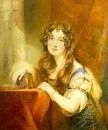
Lady Jane Stewart
The Duke of Marlborough married, firstly, his first cousin Lady Jane Stewart, daughter of George Stewart, 8th Earl of Galloway, on 13 January 1819. They had four children:
Lady Louisa Spencer-Churchill (c. 1820–1882), married the Honourable Robert Spencer, son of Francis Spencer, 1st Baron Churchill and had issue.
John Winston Spencer-Churchill, 7th Duke of Marlborough (1822–1883).
Lord Alfred Spencer-Churchill (1824–1893), married Hon. Harriet Gough-Calthorpe, daughter of Frederick Gough-Calthorpe, 4th Baron Calthorpe and had issue.
Lord Alan Spencer-Churchill (25 July 1825 – 18 April 1873), married Rosalind Dowker.
After his first wife’s death in October 1844, aged 46, he married, secondly, the Honourable Charlotte Augusta Flower, daughter of Henry Flower, 4th Viscount Ashbrook, on 10 June 1846. They had two children:
Lord Almeric Athelstan Spencer-Churchill (1847 – 12 December 1856) died young.
Lady Clementina Augusta Spencer-Churchill (4 May 1848 – 27 March 1886) married John Pratt, 3rd Marquess Camden and had issue.
After his second wife’s death in April 1850, aged 31, he married, thirdly, his first cousin (that is the second of his first cousins he married—Both named Jane) Jane Francis Clinton Stewart, daughter of the Honourable Edward Richard Stewart and granddaughter of John Stewart, 7th Earl of Galloway, on 18 October 1851. They had one child:
Lord Edward Spencer-Churchill (28 March 1853 – 5 May 1911), married Augusta Warburton, daughter of Major George Drought Warburton and had issue.
Marlborough died at Blenheim Palace in July 1857, aged 63, and was succeeded by his eldest son, John.
The Duchess of Marlborough died at 28 Grosvenor Street, Mayfair, London, in March 1897, aged 79.
Child by Harriet Churchill (1798 – 1834) married Karl Graf v. Westerholt in 1819.
Susan Churchill (1818 – 1882) married Aimé Timothé Quénod
George Spencer-Churchill, then Marquess of Blandford, and Harriet Churchill went through a false ceremony of marriage with a relative of the groom posing as a cleric. A voyage to Scotland where they lived as husband and wife was intended by the bride and her parents to make this marriage legal under Scotch law. The sixth Duke did however successfully contest in a court of law that they had lived as if they had been married.

Trolling Down to Old Mah Wee, another Fantasy
Trolling Down to Old Mah Wee
Not only do I write Regency and Romance, but I also have delved into Fantasy.
The Trolling series, (the first three are in print) is the story of a man, Humphrey. We meet him as he has left youth and become a man with a man’s responsibilities. We follow him in a series of stories that encompass the stages of life.
We see him when he starts his family, when he has older sons and the father son dynamic is tested. We see him when his children begin to marry and have children, and at the end of his life when those he has loved, and those who were his friends proceed him over the threshold into death.
All this while he serves a kingdom troubled by monsters. Troubles that he and his friends will learn to deal with and rectify. It is now available in a variety of formats.
For $2.99 you can get this 2nd book in the fantasy adventure series of Humphrey and Gwendolyn.
Barnes and Noble for your Nook
When the neighboring kingdom of Mah Wee begins to experience the same problems that beset Torahn some years before, they urgently request the aid of the experts in containing a new Troll infestation. But eradicating Trolls is not as easy as exterminating a few rats or mice.
Trolls are bigger than men, they are stronger than men, and then are meaner than men. Humphrey Cutter and his band of mismatched warriors must once again rise to the occasion, but can they without the aid of expertise of Gwendolyn and her particular skills?
Mah Wee, an ancient kingdom, with a monarch more steeped in the rights of being a king rather than the obligations and duties that a king should be. Here Humphrey and his crew finds that they have more than Trolls to overcome if they are to save Mah Wee from the same or nearly similar problems that they faced before in Torahn.
But, as Humphrey knows, nothing can truly be accomplished if the lovely Gwendolyn is not able to lend her aid as well.
Feedback
If you have any commentary, thoughts, ideas about the book (especially if you buy it, read it and like it ;-) then we would love to hear from you.

December 4, 2014
Regency Personalities Series-George Byng 4th Viscount Torrington
Regency Personalities Series
In my attempts to provide us with the details of the Regency, today I continue with one of the many period notables.
George Byng 4th Viscount Torrington
11 October 1740 – 14 December 1812
George Byng 4th Viscount Torrington was the son of George Byng, 3rd Viscount Torrington and Elizabeth Daniel.
He gained the title 4th Viscount Torrington at the death of his father in 1750.
On 20 July 1765 he married Lady Lucy Boyle (1744–1792), daughter of John Boyle, 5th Earl of Cork and Margaret Hamilton . They had seven children:
Lucy Elizabeth Byng (17 October 1760 – 20 September 1844), married Orlando Bridgman, 1st Earl of Bradford, 29 May 1788.
Georgiana Elizabeth Byng (1768 – 11 October 1801), married John Russell, later 6th Duke of Bedford, 1786.
William Henry Byng (27 November 1769 – 23 November 1770)
Isabella Elizabeth Byng (21 September 1773 – 1 May 1830), married Thomas Thynne, 2nd Marquess of Bath, 14 April 1794.
William Henry Byng (baptized 4 June 1775 – 1792)
George Byng (baptized 24 March 1777 – 13 October 1792)
Emily Byng (? – 3 September 1824), married the Hon Henry Seymour, 1801.
Upon his death, his brother became John became Viscount for not quite a month, dying January 8th 1813, and then his eldest son George became the sixth Viscount.

Jane Austen Fans Rejoice, Jane is BACKKKK… Jane Austen and Ghosts
Special Sale Price!
Jane Austen and Ghosts.
Not only do I write Regency and Romance, but this can take a humorous turn. Some years back, I am sure readers of this blog will be aware that some writers began to take great liberty with Jane Austen and her works. Pride and Prejudice being liberally rewritten with the inclusion of zombies.
Then other books appeared with sea monsters, and werewolves and vampires. President Lincoln has even made it to the big screen where he is intent on sending foul creatures to hell. It occurred to me, even before I read any of this literature, that Jane would probably not appreciate what had been done to her classic piece.
That the tales and her life have become visual spectacles that we enjoy she might not like either, but is perhaps resigned to. That zombies, ghosts and vampires are now used to follow her own plot lines would I think, have her turning over in her grave. Jane Austen and Ghosts is my take on that.
It is now available in a variety of formats. For a limited time it has been reduced to $2.99 for your eReaders and $8.99 for paperback you can get this Jane Austen adventure.
Barnes and Noble for your Nook
and in Paperback
In the world of moviemaking, nothing is as golden as rebooting a classic tale that has made fortunes every time before when it has been adapted for the silver screen.
Certainly any work by Jane Austen made into a movie will not only be bankable, but also considered a work of art. That is of course until the current wave of adaptations that unite her classic stories with all the elements of the afterlife is attempted to be created.
That these have found success in the marketplace amongst booklovers may not be quite understood by those who make movies. But that they are a success is understood and a reason to make them into movies.
All that being said, perhaps it would also be fair to say that the very proper Jane, were she present to have anything to say about it, would not be pleased. Of course she has been away from this Earth for nearly 200 hundred years.
But does that mean were she upset enough, she wouldn’t come back?
Feedback
If you have any commentary, thoughts, ideas about the book (especially if you buy it, read it and like it ;-) then we would love to hear from you.

December 3, 2014
Regency Personalities Series-Maurice Berkeley 1st Baron FitzHardinge
Regency Personalities Series
In my attempts to provide us with the details of the Regency, today I continue with one of the many period notables.
Maurice Berkeley 1st Baron FitzHardinge
3 January 1788 – 17 October 1867
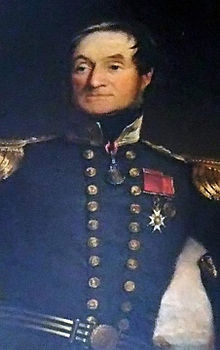
Maurice Berkeley
Maurice Berkeley 1st Baron FitzHardinge was born the illegitimate son of Frederick Berkeley, 5th Earl of Berkeley and Mary Berkeley (née Cole), Berkeley entered the Royal Navy in June 1802. Promoted to lieutenant on 9 July 1808, he joined the fifth-rate HMS Hydra on the east coast of Spain and then commanded gunboats on the Tagus, reinforcing the Lines of Torres Vedras, in Autumn 1810 during the Peninsular War. Promoted to commander on 19 December 1810, he was given command of the sixth-rate HMS Vestal. After being promoted to captain on 7 June 1814 and, having brcome a Deputy Lieutenant of Sussex on 18 June 1824, he took command of the fifth-rate HMS Semiramis, flagship of the Commander-in-Chief, Cork in May 1828.
Entering politics, Berkeley became Whig Member of Parliament for Gloucester in the 1831 general election. He resigned his seat in April 1833 following his appointment as Fourth Naval Lord in the Grey ministry that month and remained in office until December 1834. He successfully became Member of Parliament for Gloucester again at the 1835 general election but, although he secured his old job as Fourth Naval Lord back again in the Second Melbourne ministry in July 1837, he was defeated at the 1837 general election. He remained in office as Fourth Sea Lord but became concerned over reductions in manning and resigned in March 1839.
Returning to sea, Berkeley was given command of the second-rate HMS Thunderer in January 1840 and served on the coast of Syria taking part in the capture of Acre in November 1840 during the Oriental Crisis. For this he was appointed a Companion of the Order of the Bath and received the Naval Gold Medal.
At the 1841 general election Berkeley returned to Parliament as Member for Gloucester again and, while still serving in Parliament, he became the Third Naval Lord in the First Russell ministry in July 1846. He was also appointed a Naval Aide-de-Camp to the Queen on 17 November 1846. He went on to be Second Naval Lord in the same ministry in December 1847 and, having been promoted to the rank of rear-admiral on 30 October 1849, he briefly became First Naval Lord in the same ministry in February 1852 but left office when the Government fell from power the following month. He became Second Naval Lord in the Aberdeen ministry in January 1853 and First Naval Lord in the same ministry in June 1854. As First Naval Lord he focussed on manning the fleet and in carrying out reforms and improvements in the food, clothing, and pay of seamen. Having been advanced to Knight Commander of the Order of the Bath on 5 July 1855, become a member of the Privy Council on 13 August 1855 and been promoted to vice-admiral on 21 October 1856, he lost his seat in Parliament at the 1857 general election and resigned as First Naval Lord suffering from ill health in November 1857.
On 26 February 1861, after inheriting his brother’s estates, Berkeley unsuccessfully claimed the Barony of Berkeley as being one by tenure of Berkeley Castle. He was advanced to Knight Grand Cross of the Order of the Bath on 28 June 1861 and was created Baron FitzHardinge, of the city and county of Bristol on 3 August 1861. He was promoted to full admiral on 15 January 1862 and died at Berkeley Castle in Gloucestershire on 17 October 1867.
In 1823 Berkeley married Lady Charlotte Lennox, daughter of Charles Lennox, 4th Duke of Richmond; after his first wife died he married Lady Charlotte Moreton, daughter of Thomas Reynolds-Moreton, 1st Earl of Ducie in 1834.



